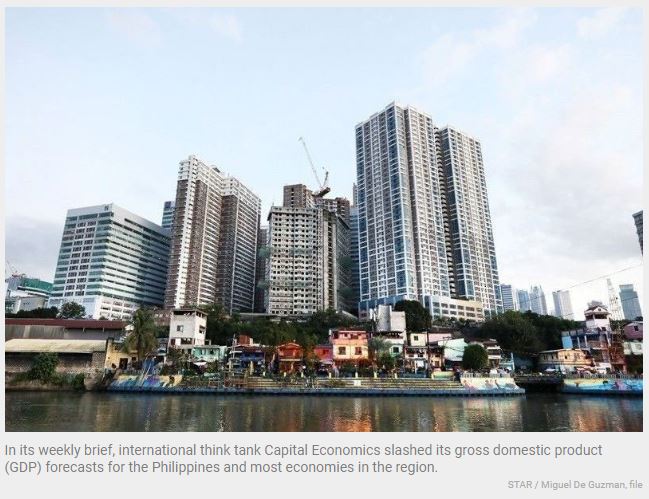GDP cut looms in Philippines
As Ukraine-Russia conflict drags on
MANILA, Philippines — Lower growth for the Philippines can be expected this year as the conflict between Ukraine and Russia escalates, but the country is still seen to be among the strongest performers in emerging Asia.
In its weekly brief, international think tank Capital Economics slashed its gross domestic product (GDP) forecasts for the Philippines and most economies in the region.
This follows the surge in global energy prices due to the Ukraine-Russia conflict.
For the Philippines, senior Asia economist Gareth Leather said GDP would likely grow by 7.2 percent this year, lower than its earlier projection of eight percent, which was the second biggest GDP expectation in emerging Asia.
At 7.2 percent, the Philippines is now seen as the third strongest performer next to Vietnam’s 8.8 percent and Bangladesh’s eight percent.
While the forecast growth is a significant jump from the 5.6 percent in 2021, it falls at the lower end of the government’s seven to nine percent target for the year.
The think tank also hiked its inflation forecast for the Philippines to 4.3 percent from the earlier four percent as oil prices continue to soar.
“Movements in energy prices have no direct impact on real GDP. But there are indirect effects caused by shifts in real income,” Leather said.
“For net-energy consuming economies, which includes most of Asia, the main hit from higher prices will come through a reduction in real incomes,” he said.
Oil prices in the world market have hovered above the $100 per barrel mark over the past weeks and has resulted in hefty oil price hikes on the domestic front.
This week, expectations for an increase of as much as P12 per liter are already worrying consumers.
Leather noted that temporary shocks to real income don’t necessarily cause spending to fall as Asian households typically have high savings.
Whenever global oil prices soared in the past, he said households have dipped into their savings to offset at least some of the hit to their real incomes.
“We expect the same this time. Looser fiscal policy will also help. Support will come either in the form of energy price subsidies or direct income transfers,” Leather said.
The government has released an initial P3 billion in fuel subsidies and discounts for public utility vehicle drivers and agriculture workers to help cushion the impact of the rise in fuel prices.
Another tranche of fuel subsidies is expected to be released next month.
Further, Leather said the upshot is that while higher energy prices will cause consumption to weaken, they will not do so by much.
“In many countries the impact will be offset by a loosening in COVID-19 restrictions,” he said.
Metro Manila and 39 other areas are under Alert Level 1 or the most lenient pandemic alert classification as COVID-19 cases continue to drop.
Source: https://www.philstar.com/business/2022/03/14/2167028/gdp-cut-looms-philippines


 Thailand
Thailand




